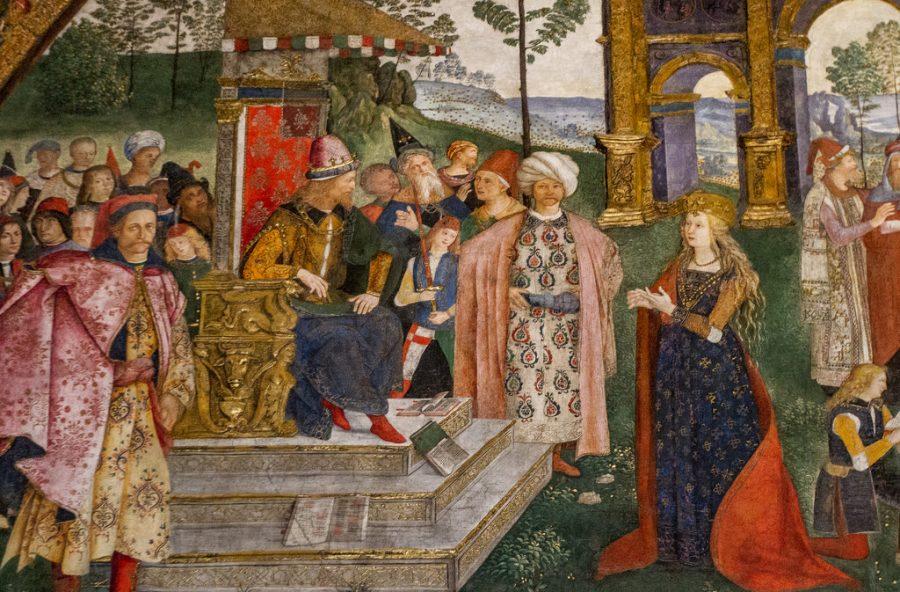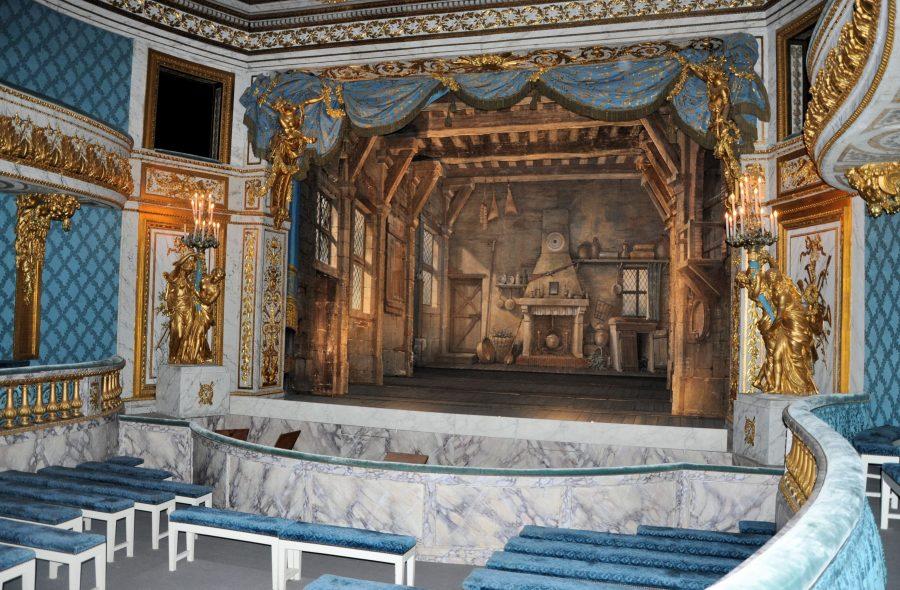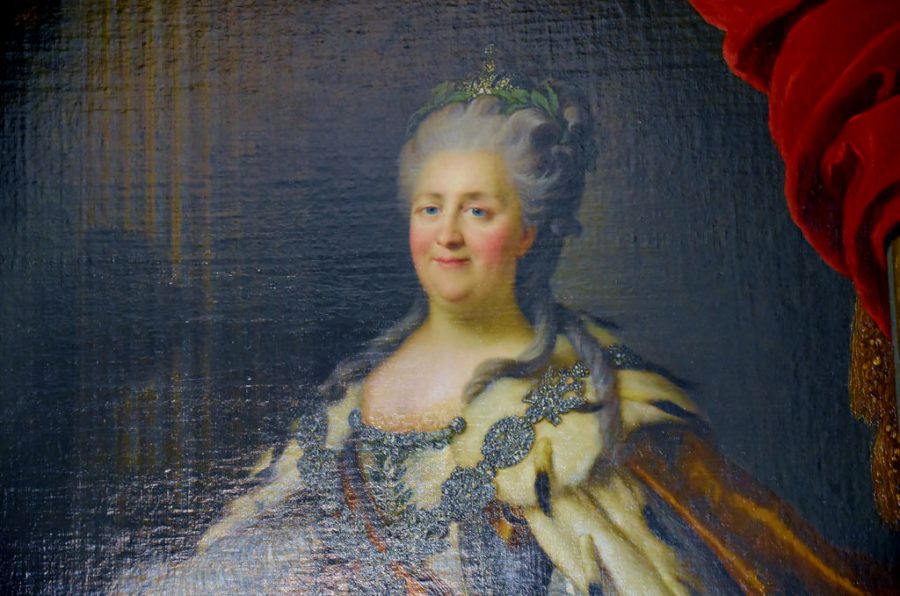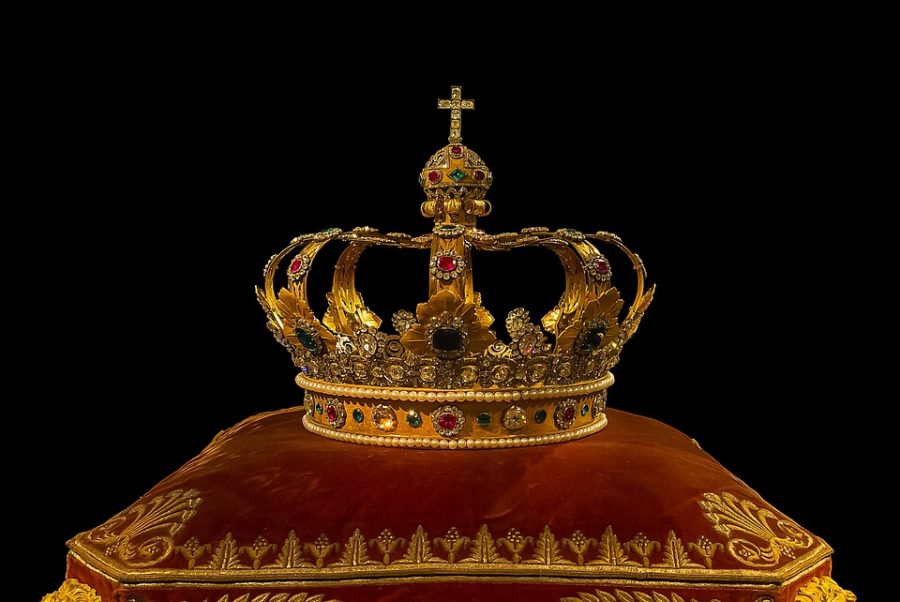In the 15th century, teenage girls were considered fair game for marriage. While the 13-year-old girls of modern-day developed countries may have trivial things such as the latest episode of a trash CW show or Logan Paul’s latest problematic vlog on their mind, at that same age, many 15th-century girls had the needs of their (much older and rarely fabulous) husbands among their top priorities. In this edition of Royal Tea, we will be discussing the life of the beautiful Lucrezia Borgia, whose family was known for their fair share of juicy scandals and frivolous secrets.
At just 12 years old,Lucrezia Borgia, the illegitimate child of Pope Alexander VI, was the muse of the famous Italian painter, Bernardino di Betto, who used her as a reference for his painting of Saint Catherine. Only a year later, Lucrezia, used as a pawn for sociopolitical gain by her father, was married off to Giovanni Sforza. The two had a not-so-tasteful fourteen year age gap between them. The wedding of Giovanni and Lucrezia was quite the event, attended by countless of Rome’s social elite; poor little Lucrezia must’ve found herself drowsy and worn out by the end (as it would’ve been way past her bedtime), in a night that celebrated an embrace of her deepest fears. Fortunately, Lucrezia’s union to the illegitimate Sforza son lost its touch of importance in the years that followed, and the Pope pulled a few strings to provide an annulment for the pair, on the grounds that Sforza had never consummated their marriage. Yet, some consummation surely must’ve occured, as the young Lucrezia was with child at the time of their annulment. Rumors, fueled by her ex-husband’s bitter rage, spread that the Pope had granted the annulment “to have the freedom to enjoy himself with his own daughter” and that there was impropriety between Lucrezia and her older brother, Cesare.
The paternity of Lucrezia’s child, whom she gave birth to in secret, remained unknown, but those full of humor and a desire to spread gossip claimed that the child was a product of Borgia incest. To combat the rumors, the Pope tried to push the narrative that the child was actually Cesare’s, who fathered a whole classroom’s worth of illegitimate children. Despite a tumultuous marriage so early in her life, Lucrezia later married Alfonso of Aragon, whom she genuinely loved. At the climax of Lucrezia’s pleasant marriage,she was struck with tragedy; after Cesare and the Pope realized that Alfonso was an obstacle to obtaining a crucial alliance, Alfonso was found strangled, suspicions over his death aligning with Cesare’s often muddy motives.
Even though the death of the young Alfonso of Aragon deeply affected Lucrezia, “third time’s the charm” proved to be an accurate statement, as she went on to marry a twenty-four-year old widower (who came with an alliance that pleased Lucrezia’s adulterous and problematic father and brother) also named Alfonso. While many pegged Lucrezia to be a murderous mistress with a sexual appetite that was comparable to any man of equal status, she was more of a chess piece controlled by the powerful men of her family. Even though she was subject to manipulation, Lucrezia, now the Duchess consort of Ferrara, had impressive autonomy over the political involvements that came attached to her suitors — her influence was so potent that her second husband even claimed to feel inferior beneath her. Lucrezia gained control over official duties and on the more scandalous side of things, was rumored to attend orgies. The most famous of these orgies was one that was actually planned by her family. (Along with being power-hungry and villainous, the Borgias had a knack for a particular kind of party planning — party poppers and hors d’oeuvres included — all in the name of God, of course.) The orgy took place when Rome’s most wealthy clergymen and officials met with fifty Roman prostitutes, taking part in activities that weren’t exactly holy (a holy papal office indeed!). This mess of an event went on to be known as the Banquet of the Chestnuts, as a sea of Chestnuts surrounded those who were engaging in unholy activity and those who simply watched (although “lookers” did not remain “lookers” for very long.) This orgy, although seemingly meaningless and unspecial in a grand scheme of Roman scandals, not only highlighted the corruption of the unholy Borgia family, but highlighted the luxurious and morally wrong lives of the elite group that was supposed to embody purity.
Lucrezia Borgia’s life was the subject of mystery, intrigue, a lot of marriage problems and incestuous endeavors with her controlling, corrupt father and her handsome yet douchey older brother, Cesare. After the death of Cesare, whose desire for political power would inspire Machiavelli’s “The Prince,” Lucrezia was struck with grief that would impact her until her death. Lucrezia, however, lived a happy life with the art-obsessed Alfonso no. 2 until her death. Despite dying at a thirty-nine years old, Lucrezia’s beauty and status as a member of the Borgia family has remained rightfully immortalized.
LATEST NEWS
- Bruins Baseball ranks second in the state, April 20
- Stress, anxiety skyrocket as students prepare for upcoming AP tests
- RBHS holds successful night of percussion
- Not even water?
- Solar eclipse to pass through Missouri, April 8
- How CPS is organized: a guide
- City of Columbia to hold school board election April 2
- Youth Election Participants to assist in upcoming municipal election
- City of Columbia hosts first Community Engagement Session for McKinney Building, hopes to gain public insight on the structure’s future
- RBHS Track Team Opener at Battle Gallery
Royal Tea: Lucrezia Borgia
February 19, 2018
Leave a Comment
More to Discover
@2021 - www.bearingnews.org
































































































